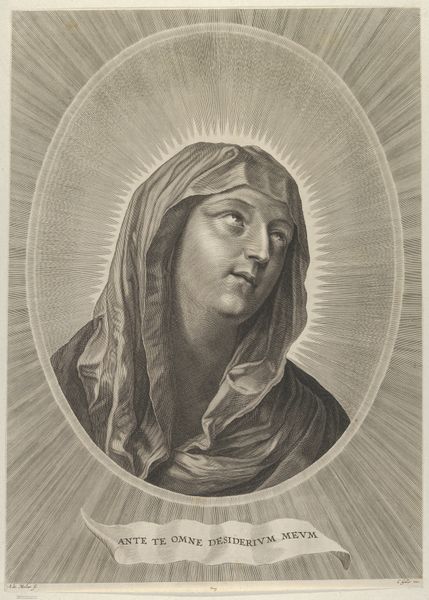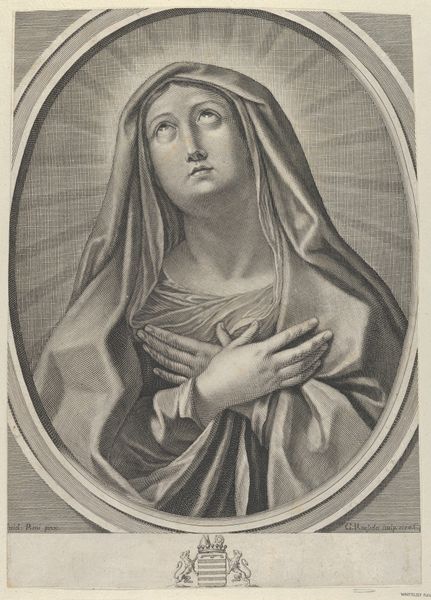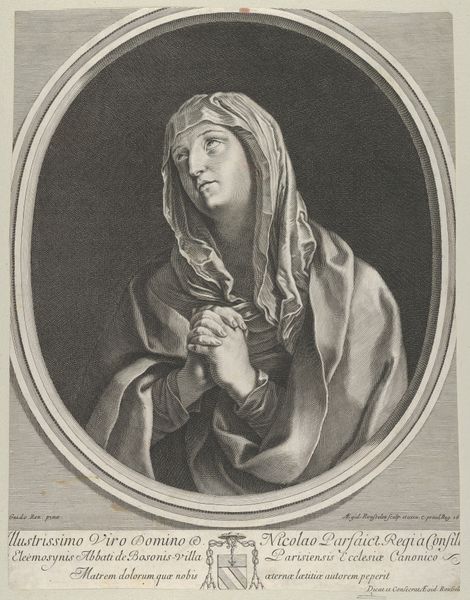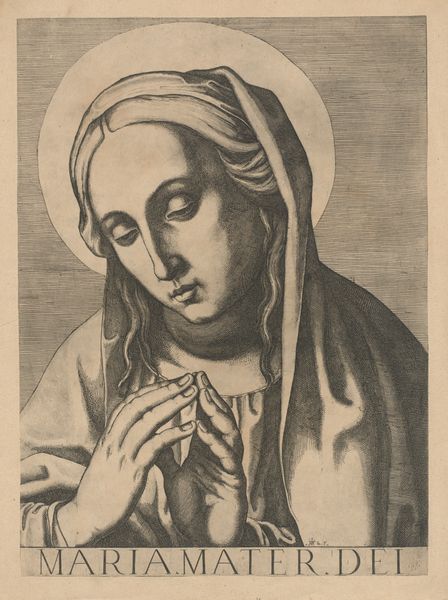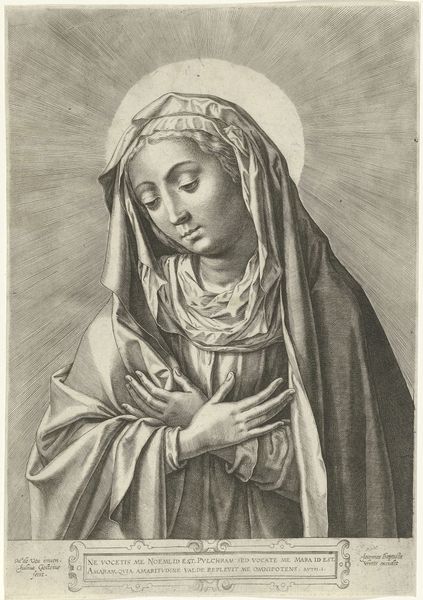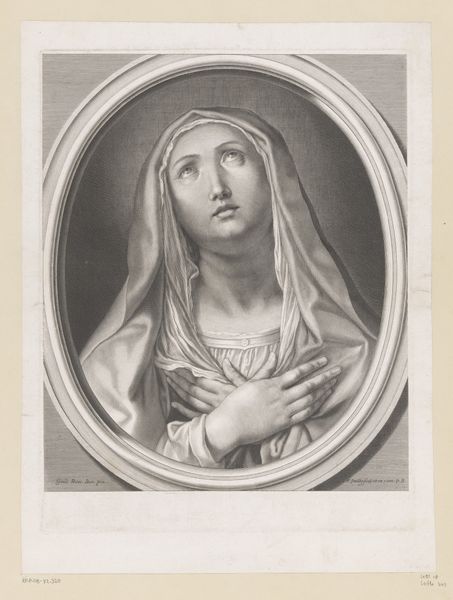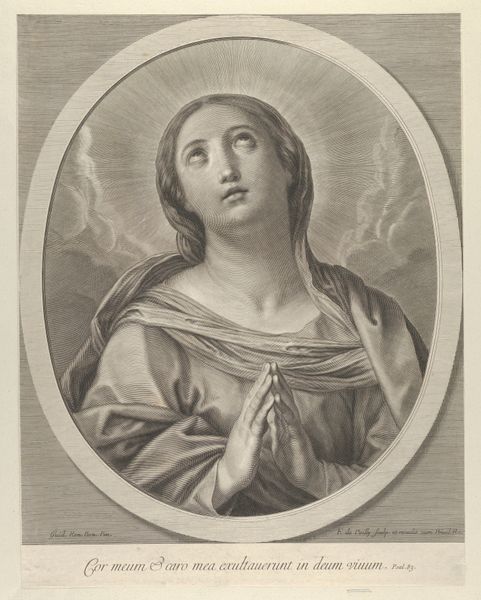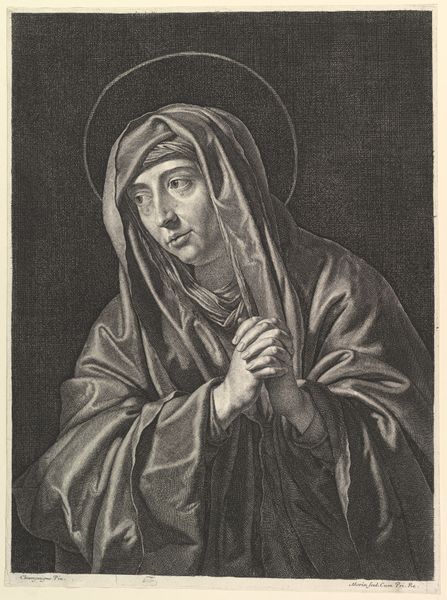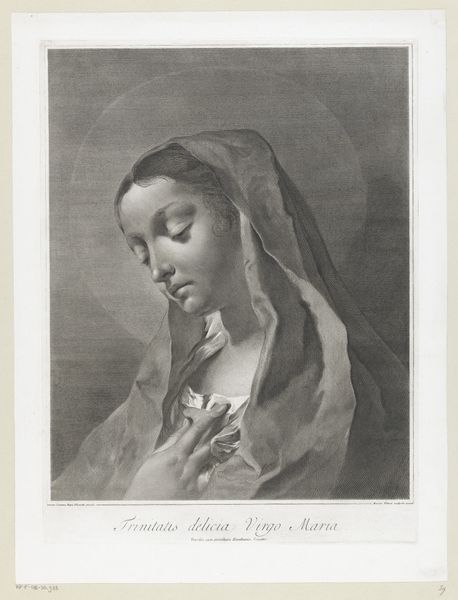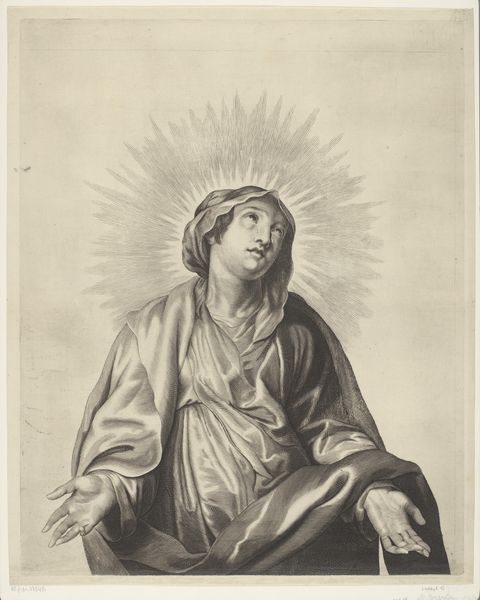
The Virgin looking up to the left, in bust length in an oval frame, after Reni 1645 - 1704
0:00
0:00
drawing, print, engraving
#
portrait
#
drawing
#
baroque
# print
#
framed image
#
line
#
portrait drawing
#
history-painting
#
engraving
#
portrait art
#
virgin-mary
Dimensions: Sheet (Trimmed): 15 7/16 × 12 3/16 in. (39.2 × 31 cm)
Copyright: Public Domain
Editor: This engraving, "The Virgin looking up to the left, in bust length in an oval frame, after Reni," by Guillaume Vallet, was made sometime between 1645 and 1704. It feels very delicate, almost ethereal. I’m curious, what stands out to you in this work? Curator: As a materialist, I immediately consider the labor and production inherent in an engraving. Think about the skill required to create such fine lines and the tools necessary. The reproduction of Reni’s work raises interesting questions. Who was this print intended for, and what kind of access did it offer to an image of the Virgin otherwise reserved for a specific class? This work challenges boundaries between what we consider high art and what is simply reproducible and for consumption. Editor: That's interesting. I was just thinking about the image itself, her piety and expression. Curator: But shouldn't we also consider the materials, like the paper and ink, and the social context that made such reproduction desirable? Who profited from this work? Editor: So, you're less concerned with the artistic intent and more with the nuts and bolts of its creation and distribution? Curator: Not less concerned, but I think a materialist approach compels us to consider art not just as a product of individual genius but also a product of very specific social, economic and historical forces. It speaks volumes about consumption habits of the period. How easily would these have been sold and bought? Editor: I hadn’t really thought about it like that before, focusing more on the surface and its symbolic message. Now I am thinking about the markets and networks required for such detailed engravings. Curator: Precisely! Hopefully, thinking about art's physical construction broadens how we value it, and what we question when standing in front of the piece.
Comments
No comments
Be the first to comment and join the conversation on the ultimate creative platform.

